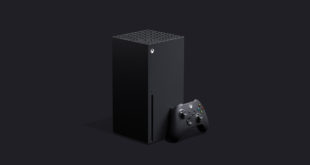Even the next generation of consoles are ‘too limited’ for the Oculus Rift, says the creator of the virtual reality headset.
The 21-year-old Palmer Lucky told Tech Radar that with the rapid pace of innovation at his company, the static hardware of traditional consoles just isn’t a good fit.
"The problem with consoles in general is that once they come out they’re locked to a certain spec for a long, long time,” he explained.
“Look at the PCs that existed eight years ago. There have been so many huge advances since then. Now look at the VR hardware of today. I think the jump we’re going to see in the next four or five years is going to be massive, and already VR is a very intensive thing, it requires rendering at high resolutions at over 60 frames a second in 3D."
The Rift first appeared on the scene last year as a Kickstarter campaign that promised the first realistically priced high-quality virtual reality headset for gaming, and already had a stunning number of endorsements from some of the biggest names in the industry.
One of those names, 3D graphics pioneer John Carmack, is now on board as the company’s CTO and the company has only gathered speed since.
"He’s super smart, he’s working on everything," Lucky said.
"Carmack is more of an engineer than a game designer. We have people on the team who are game designers and who have come from that background. His game design background is not the thing that’s being applied the most in Oculus right now, it’s his incredible programming talent and understanding of how to integrate hardware with software effectively."
Since his arrival, the Rift has made strides towards becoming a standalone Android-powered gaming device to be launched alongside or close to the commercial release of the PC-powered headset.
That’s not all the team is working on either: improvements are being made to the Rift’s resolution, positional tracking, reduced motion blur, and latency.
"We already have internal prototypes that for some content completely eliminate motion sickness," said Lucky.
"Our newer hardware is much better and it greatly reduces the chances of someone getting motion sick."
Lucky doesn’t want to tie this innovation down to the relatively stagnant console market, and says he plans to make upgrades to the system every year.
"Consoles are too limited for what we want to do," he said.
"We’re trying to make the best virtual reality device in the world and we want to continue to innovate and upgrade every year – continue making progress internally – and whenever we make big jumps we want to push that to the public."
"We’re seeing games that are already saying they’re gonna run in 720p on next gen so they can barely hit 60 in 2D. It’s hard to imagine them running a VR experience that’s on par with PC. And certainly five years from now the experiences and the technology for virtual reality that will be available on PC is going to be be so far beyond anything that a console can provide.”

 MCV/DEVELOP News, events, research and jobs from the games industry
MCV/DEVELOP News, events, research and jobs from the games industry



